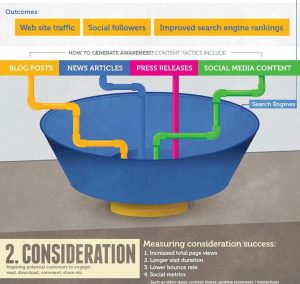— August 26, 2019
An alarming digital marketing trend should scare all online publishers: Organic traffic from Google is vanishing:
- Google’s latest search elements (featured snippets and People Also Ask) steal clicks from organic listings.
- The first three positions account for over 50% of clicks. This means that you’re still “buried” on the bottom or middle of Page 1.
- Organic click-through rate (CTR) is declining across the board: The top position had a CTR of 38.7% in May 2014. As of June 2019, it was 31.0%.
On top of all that, most browser-based searches on Google result in zero clicks:
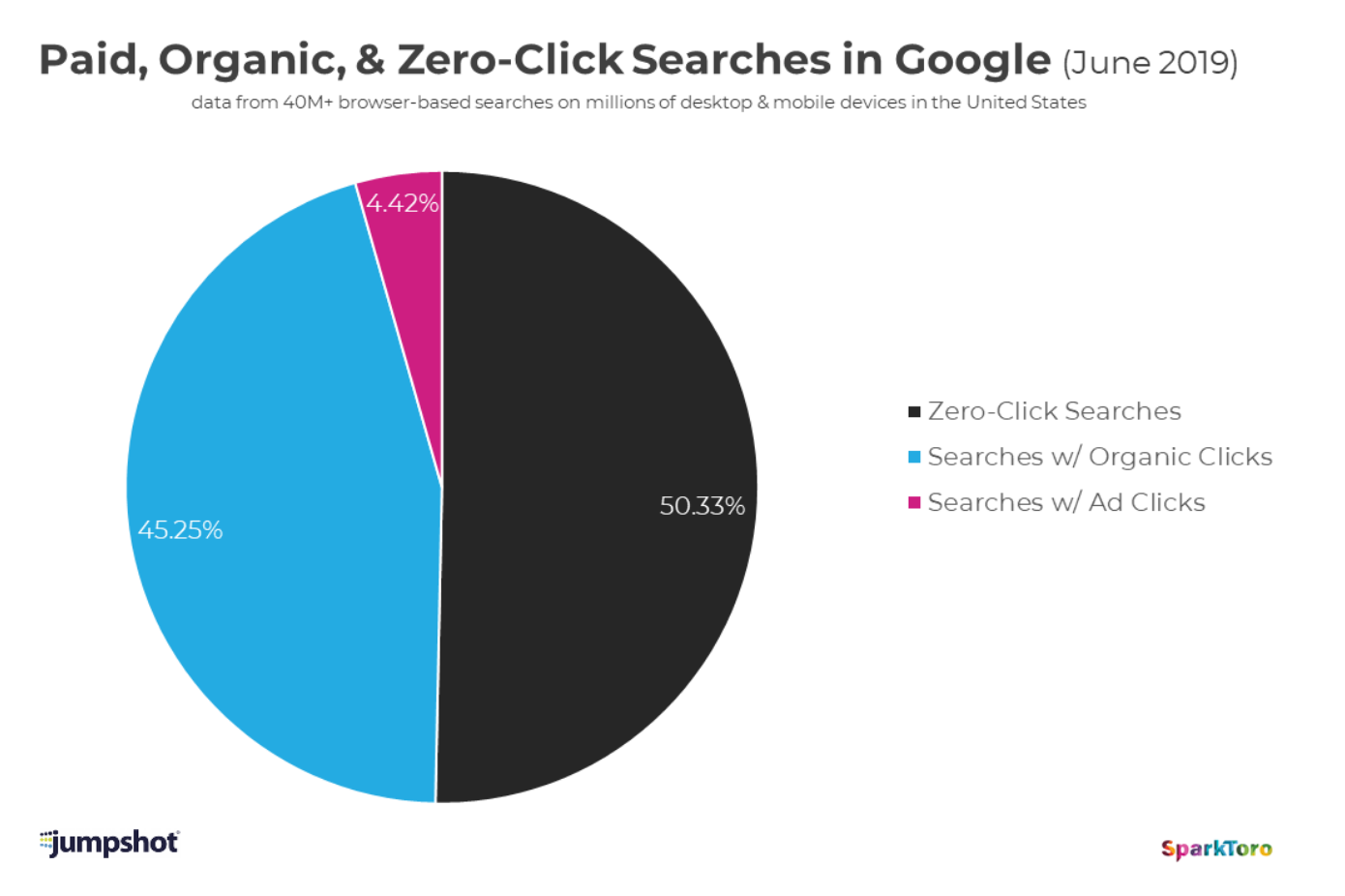 Zero-click searches result from Google’s ability to give quick answers on search result pages—current local weather, definitions, solutions to math problems, currency conversions, etc. (Image source)
Zero-click searches result from Google’s ability to give quick answers on search result pages—current local weather, definitions, solutions to math problems, currency conversions, etc. (Image source)
Yet, Google remains the most effective online traffic source. With more than 3.5 billion searches a day (and 1.2 trillion per year) worldwide, a presence on Google isn’t optional. If a business isn’t on Google, it doesn’t exist.
Search (read: Google) is still where most buying journeys start. It’s also the only scalable, sustainable source of free traffic. You may not like the trend, but there’s no alternative to Google’s traffic. So how can you still get organic clicks from a Google SERP?
Making your search snippets more clickable is a good place to start. Whether you rank first or fifth, improving your click-through rate is low-hanging fruit that will impact your bottom line—without a major investment in link-building or dedicated marketing campaign.
Here are things you can do to improve your click-through rate in Google.
1. Get more clickable links inside your search snippet.
There’s an accepted truth from email marketing: The more clickable links you have in your email, the more clicks you get. When web users see something that looks like a link, they feel compelled to click it. Links invite clicks; it’s as simple as that.
The same principle applies to Google’s search snippets. The only difference is that we can’t directly edit links’ appearance on a search results page (SERP) or—more importantly—how many links they choose to include.
There are two ways to increase your odds of having more than one clickable link inside your search snippet:
Create an on-page clickable table of contents.
Have you ever seen “Jump to” links inside a search snippet? They take you right to the part of the page with the information you’re searching for. Here’s what they look like:
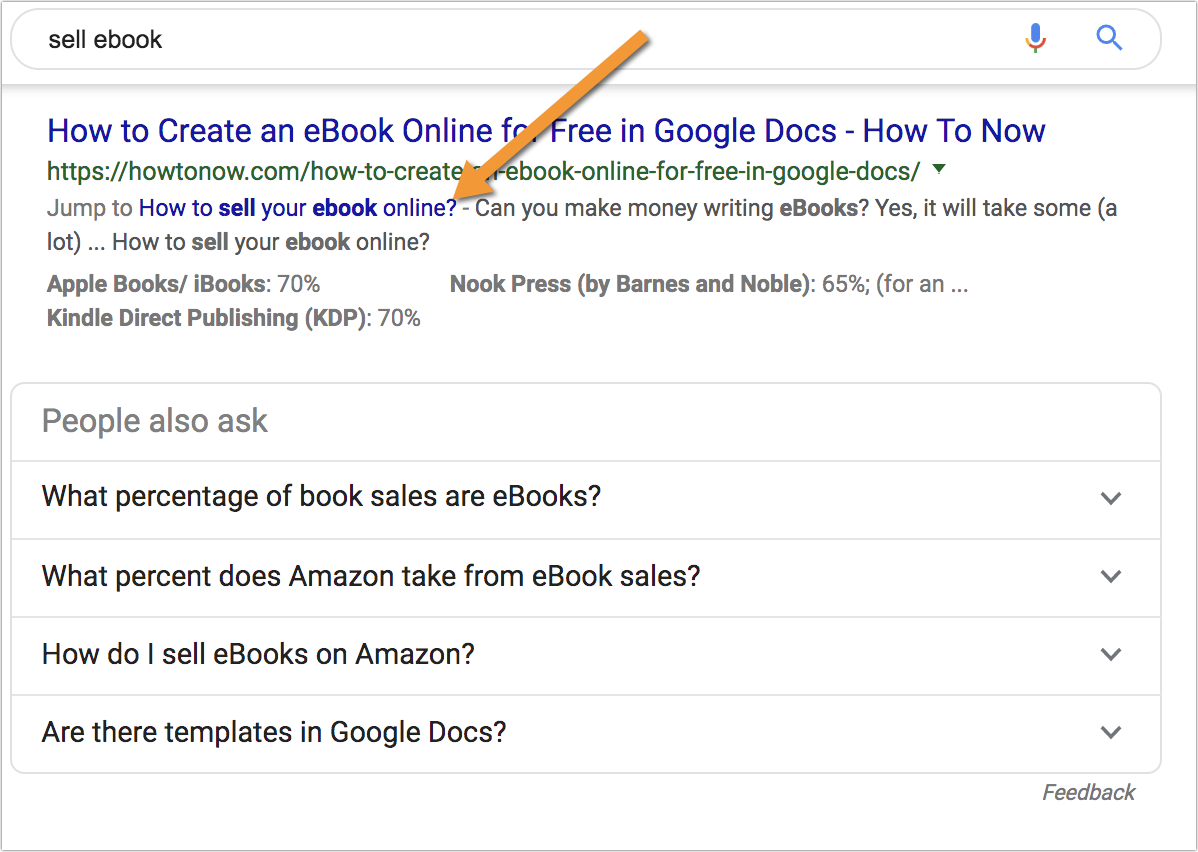
And here’s what populates that link from the document:
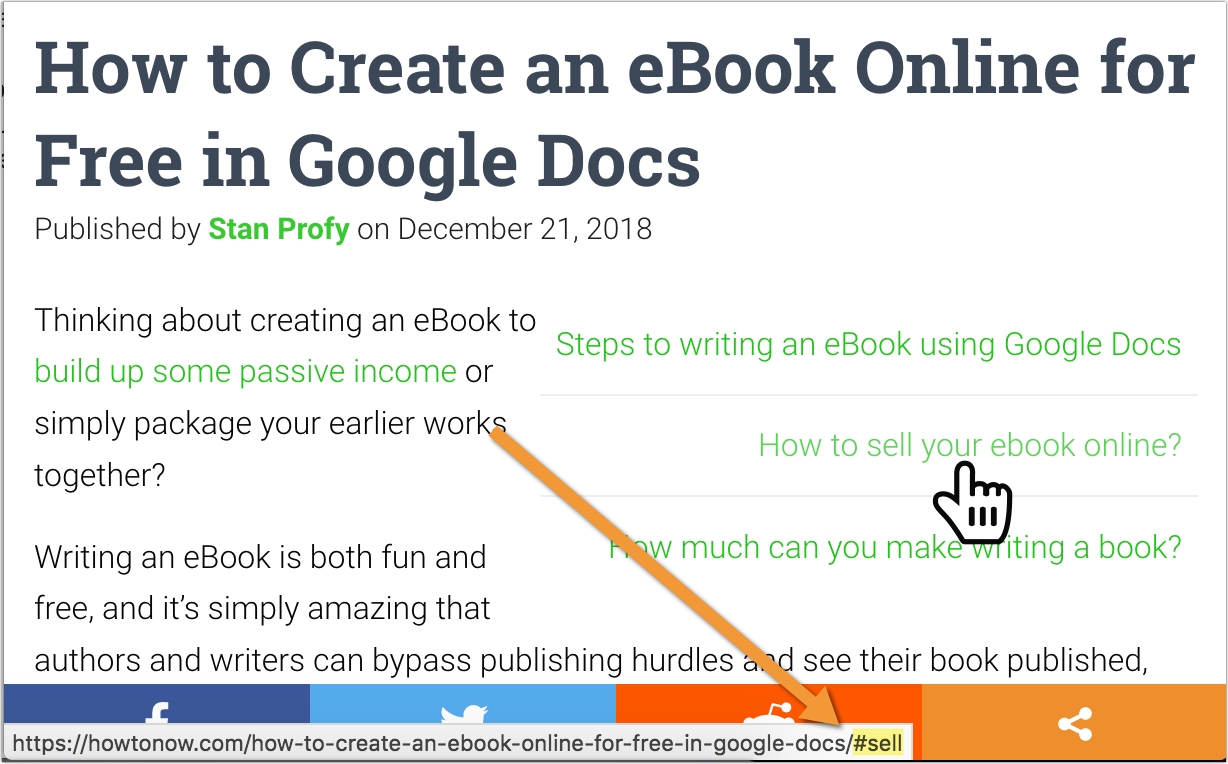
Google’s “Jump to” link is populated by a “named anchor” HTML element that identifies (or “names”) a part of the document.
There are two ways to add these:
- Do it manually. Create anchor links for fast navigation. This method requires a bit of work, but, on the bright side, you have full control over how you name your anchors and links for better usability and SEO-friendliness.
- Use a WordPress plugin like Easy Table of Contents. Automatically add a clickable, named-anchor table of contents to each article based on H2 and H3 subheads. Here’s a detailed tutorial on using this plugin.
Optimize for mini-sitelinks.
While generic sitelinks usually appear for navigational queries, mini-sitelinks may be triggered for all kinds of searches, and there may be more than one search snippet with mini-sitelinks on a SERP.
Both types of sitelinks rely on on-page navigation (and whether Google deems your navigational links relevant to the current query). This is what mini-sitelinks look like for an informational query:
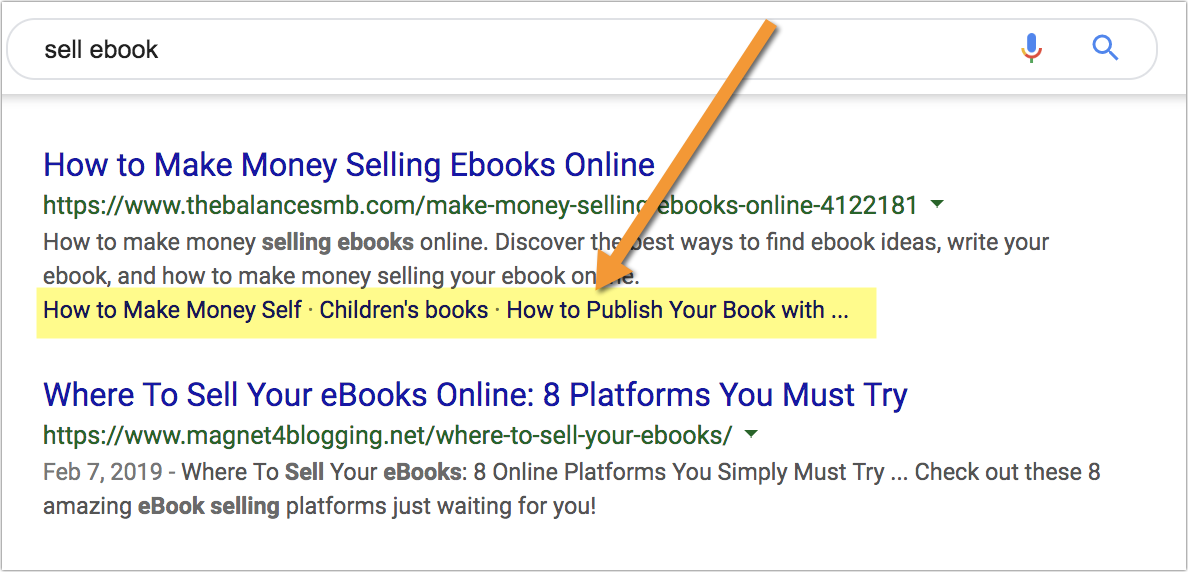
You don’t have control over mini-sitelinks, but you can increase your odds of earning them. Google uses on-page clues to generate mini-sitelinks, especially:
- On-page tables of contents (see above);
- Related content blocks underneath your content. This is the case in the screenshot above. Mini-sitelinks are populated from a “related reading” block underneath the article:
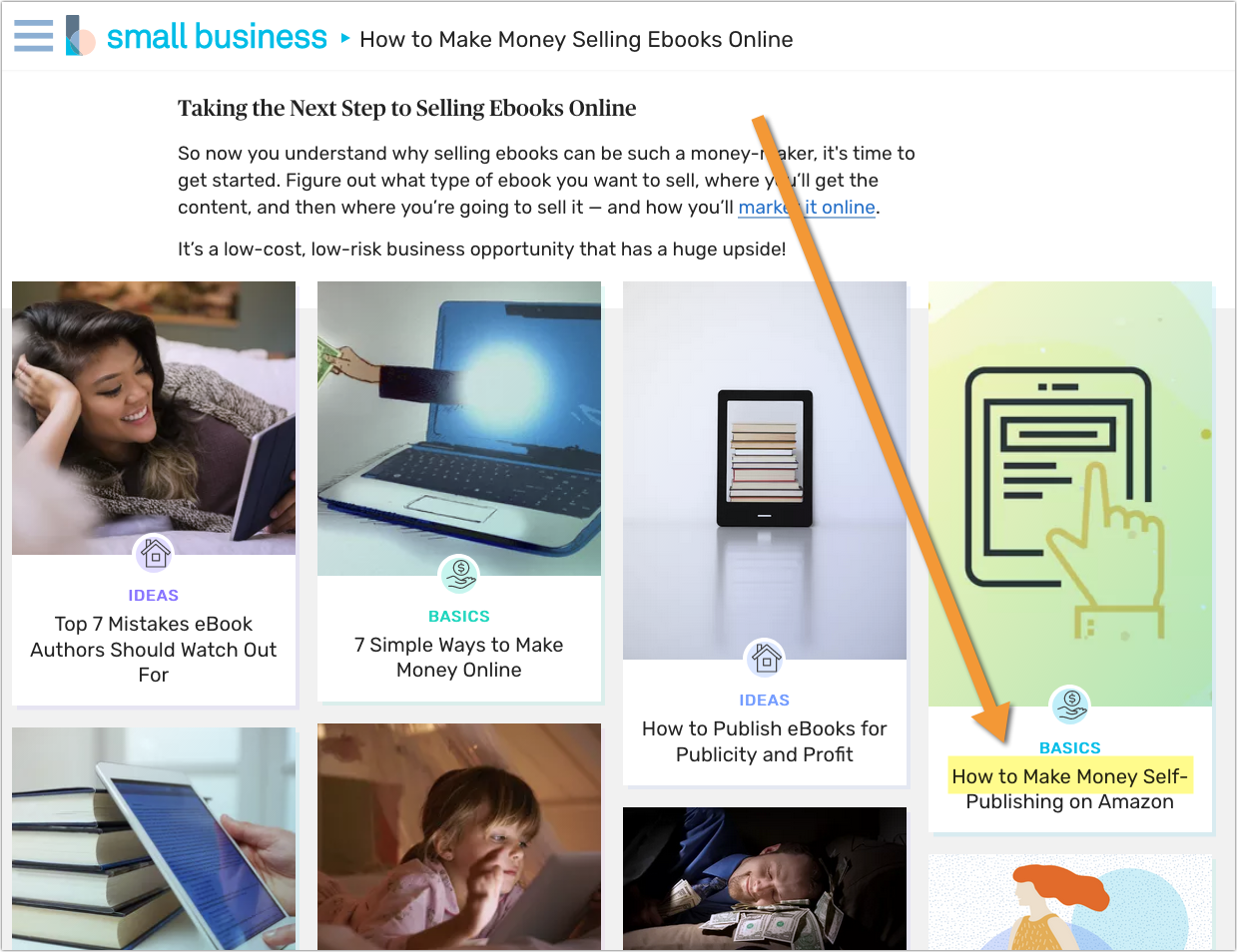
Having both (named anchors and related content blocks) increase your chances of getting those extra links.
2. Get more words in bold in your search snippet.
Bold font immediately attracts user eyes. Within search snippets, Google highlights certain words in bold to help users choose the best result. Having more words in bold inside your search snippet will help it stand out and likely attract more clicks.
Here’s how you can ensure that more words are highlighted in bold in your search snippets:
Use your target query strategically.
This is an easy one: Google will bold the query (or part of the query) that the user typed into the search box:
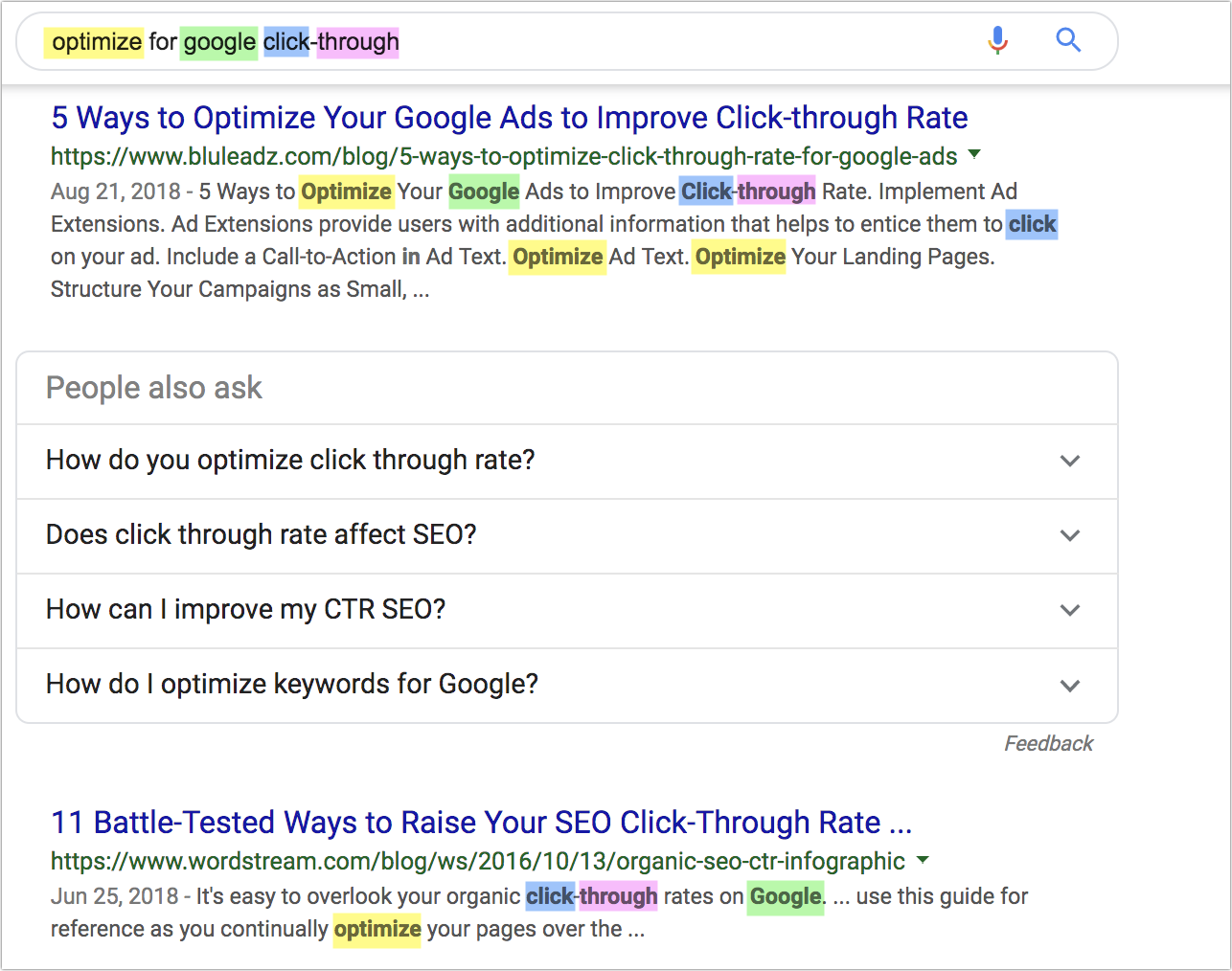
The obvious solution is to use your target query in your content (more than once) to give Google more opportunities to generate a search snippet with those words in bold. Note that I’m not talking about keyword density, a concept that should have been long forgotten (yet stubbornly reappears in our industry).
Strategic keyword usage means using your target query in prominent places around your document to ensure search crawlers and human readers instantly see them when landing on the page.
I previously wrote a detailed guide on keyword research, which lists places to include your target query:
- Headline;
- URL slug;
- First paragraph;
- Subheadings.
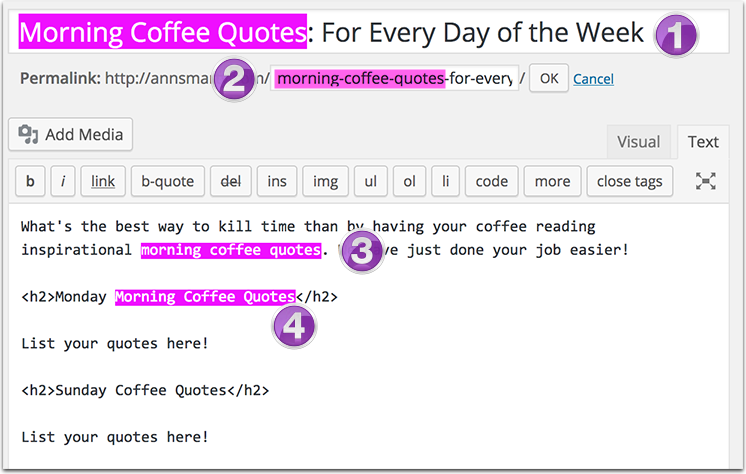
Use related terms and synonyms.
Google has long moved away from exact keyword matching. These days, they understand search queries in context. Specifically, Google can understand closely related words as well as synonyms, which they often highlight in search results:
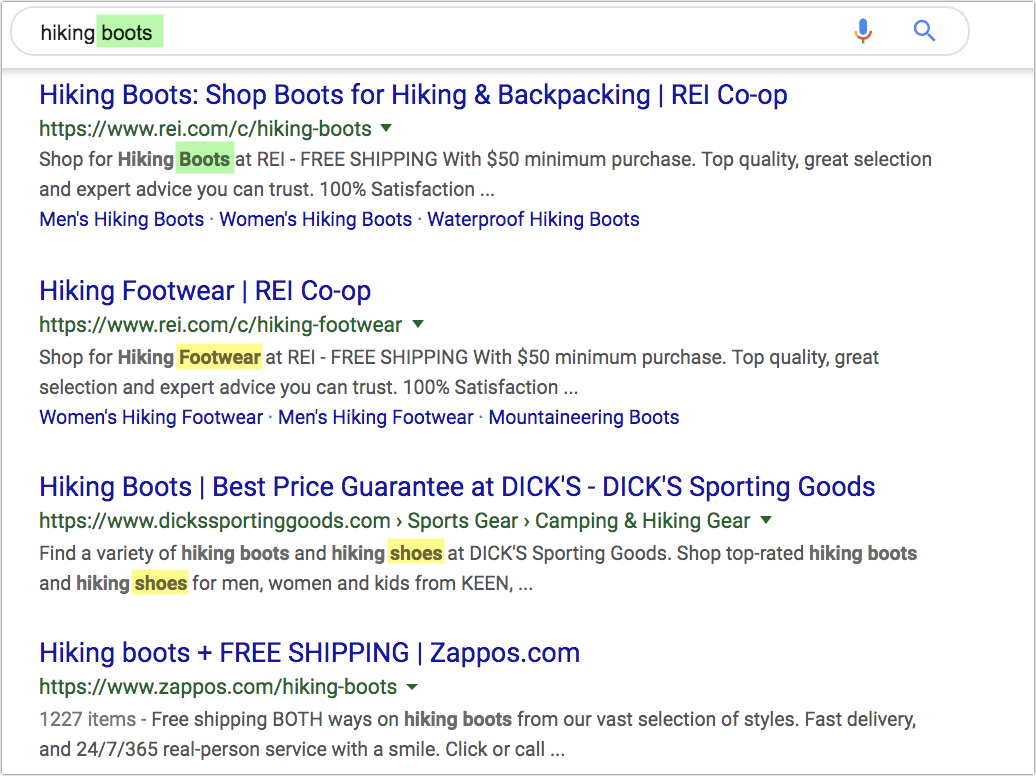
Google bolds related terms—not just exact keyword matches—that relate to the query.
You’re likely doing this already without realizing it. Good writers use varied vocabulary and include synonymous phrases and concepts without thinking about “click-through optimization.”
However, being a bit more strategic about it will help you on many fronts, including creating better, more thorough copy, improving your organic rankings, and, yes, increasing your click-through rate (CTR).
Tools you can use to make this easier
Ahrefs
Ahrefs has a cool section inside their “Keyword explorer” called “All keyword ideas.” This section offers “keyword extensions” (i.e. extending your base term into a longer phrase) and lists closely related terms you should consider using in your content.
To use the tool to go beyond your core term, use the “Exclude” filter to filter out phrases containing it:
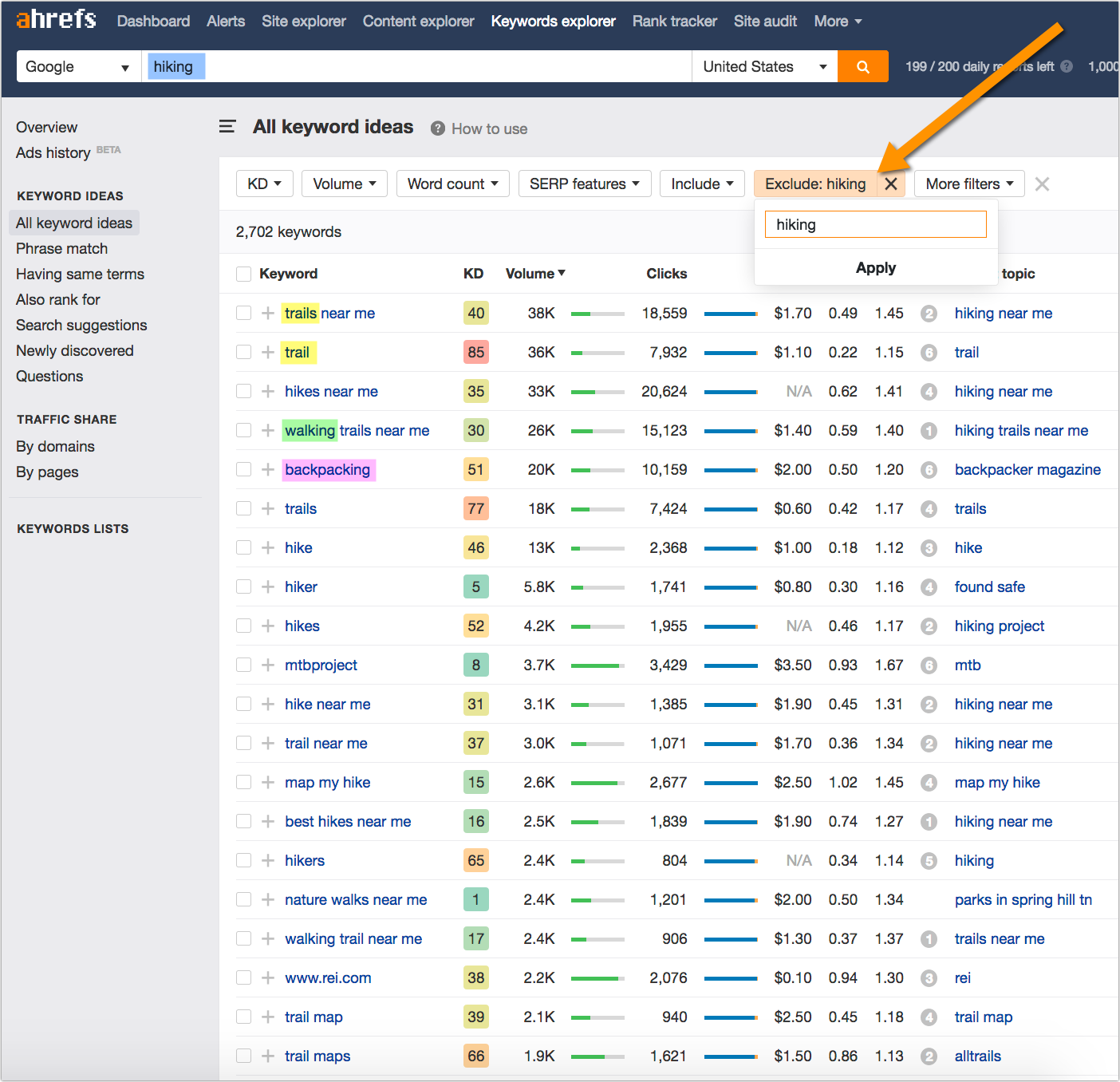
Text Optimizer
Text Optimizer is the semantic research tool that goes right to the source—Google’s search snippets. It uses that data to generate a list of closely related terms and concepts.
You need to use common sense and editorial judgment to pick terms you want to use, but if you choose at least 25, you’re likely to see an organic visibility boost (i.e. higher rankings) and higher search snippet CTR:
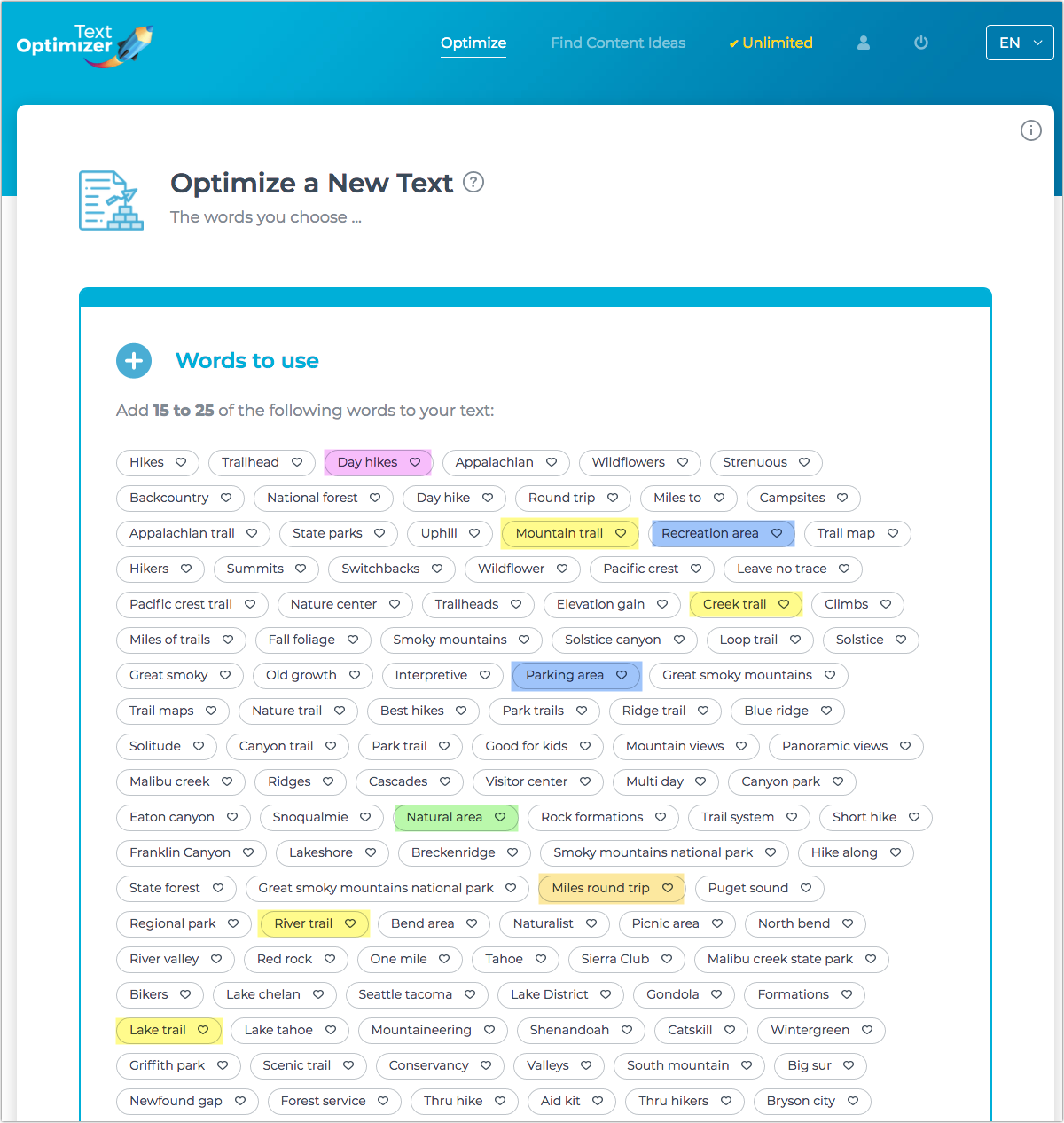
The tool also helps you use those important phrases in close proximity. Click any term, and it generates possible sentences for you to use:
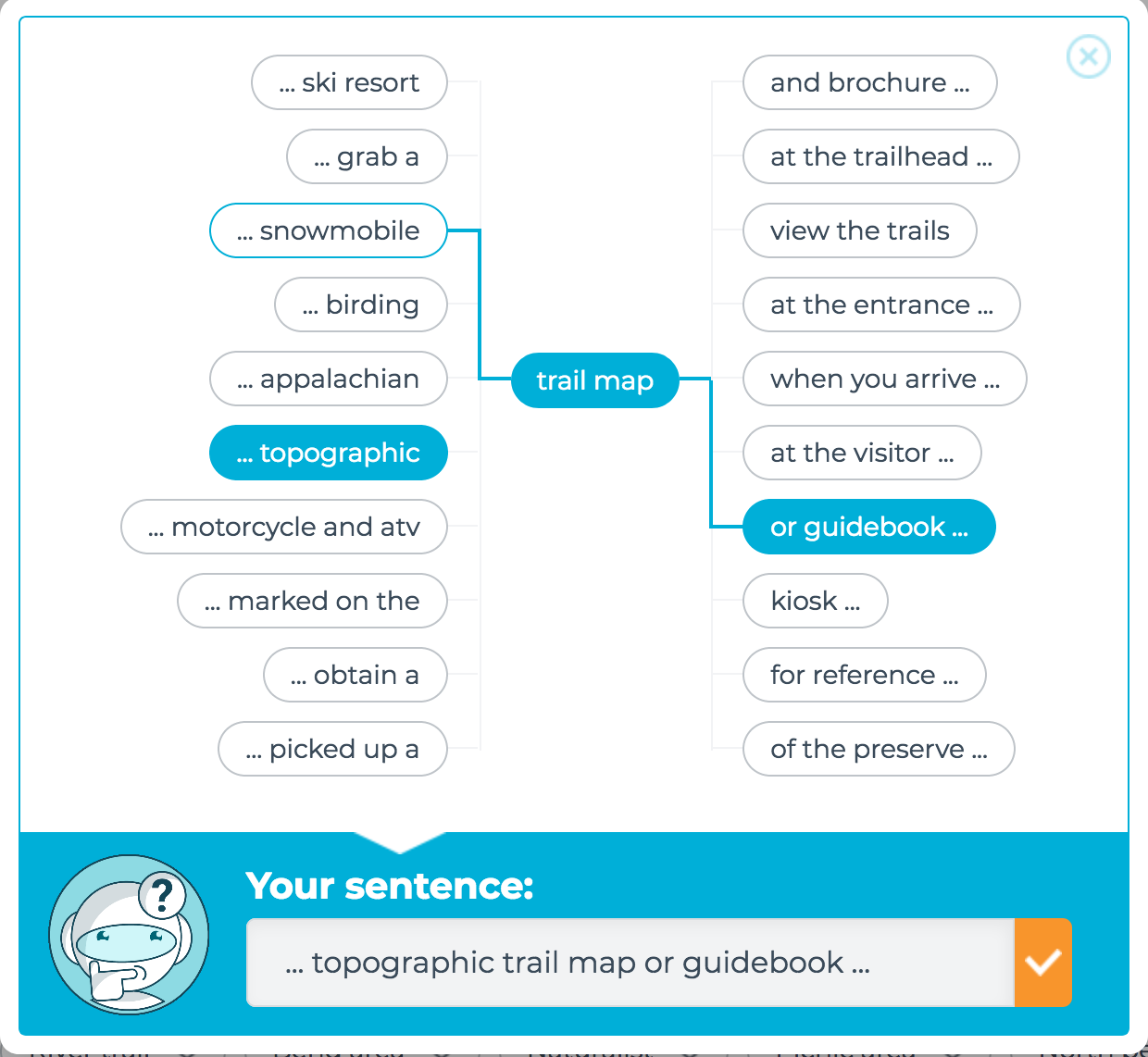
3. Structure your content well.
Optimize for enhanced snippets with structured markup.
Structured markup adds code to a webpage to make it easier for search crawlers to understand, extract, and display key information in SERPs.
When it comes to the actual search snippets, Google supports a limited number of structured markup types. Most supported structured markup helps Google include data in additional search elements (e.g., brand knowledge graph elements, video and image carousels, claim-review results, book reviews, etc.)
To impact your organic search snippets, you can use the following types of structured markup:
Structured markup | Who/when it should be used |What it does to your search snippet
| Ratings and reviews | Tool reviewers, product reviewers, etc. If you review entities often, consider installing one of these plugins. | Depending on how you implement it, the search snippet displays the reviewer’s name and the star ratings given. |
| Logo | Everyone | In mobile search results, it shows a logo next to your search listing. |
| Breadcrumb | Everyone | On desktop, it generates a prettier URL path showing section names instead of the actual URL. (On mobile, it is displayed this way, regardless of markup.) |
| Course | If your page lists available courses | Shows a list of courses underneath your page title in SERPs. |
| FAQ | If your page contains a list of questions and answers around the target query. | Shows a collapsible list of questions underneath the search snippet. |
| How to | If your page contains a detailed how-to tutorial on any topic | Shows time required, list of required tools/materials, and collapsible steps to follow. |
| Q&A | If your page features a question with multiple answers posted by users | Lists all available answers, including the “best answer,” underneath your search snippet. |
Create lots of comparison and summary charts and tables.
Google loves good-old tables and charts. They often use them to generate enhanced search snippets. Here’s what it may look like:
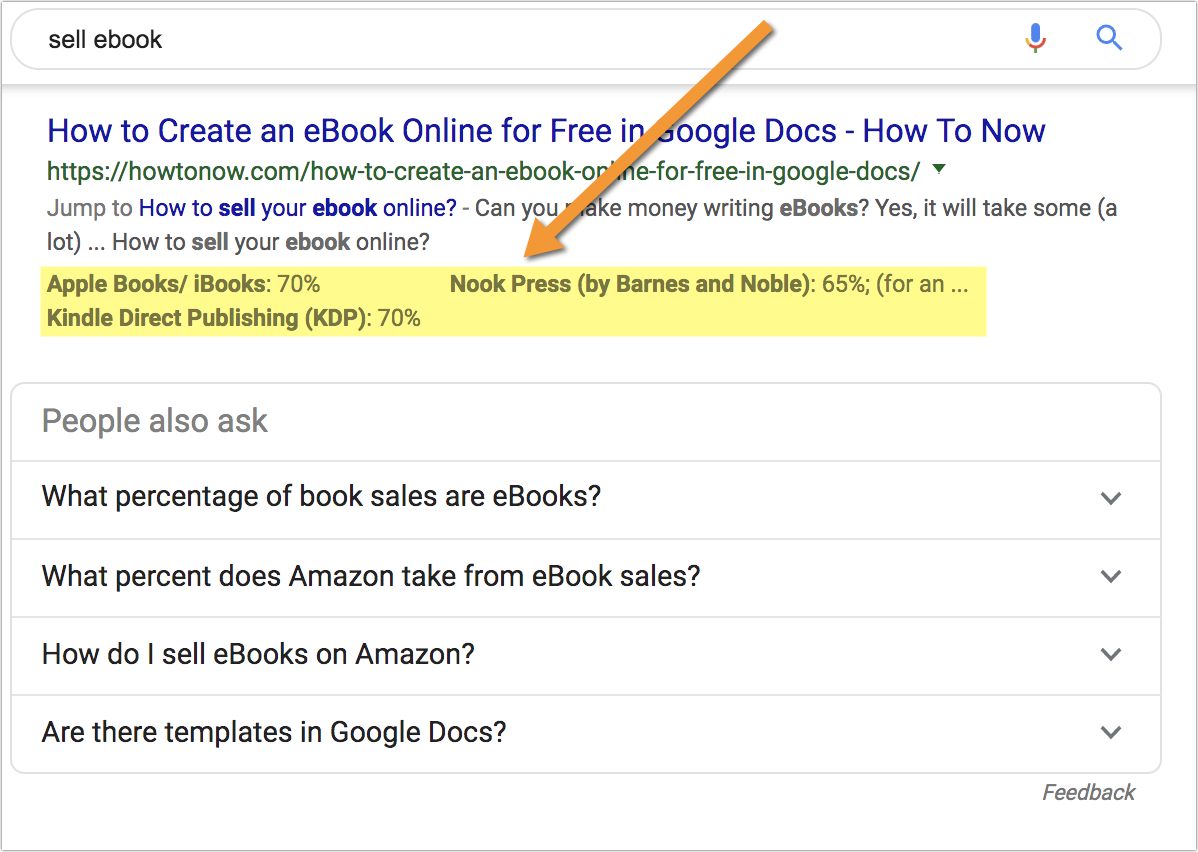
Notice how Google also highlights key sections of the chart in bold, making them stand out in search results even more.
And here’s the summary <table> that triggered the enhanced search snippet:
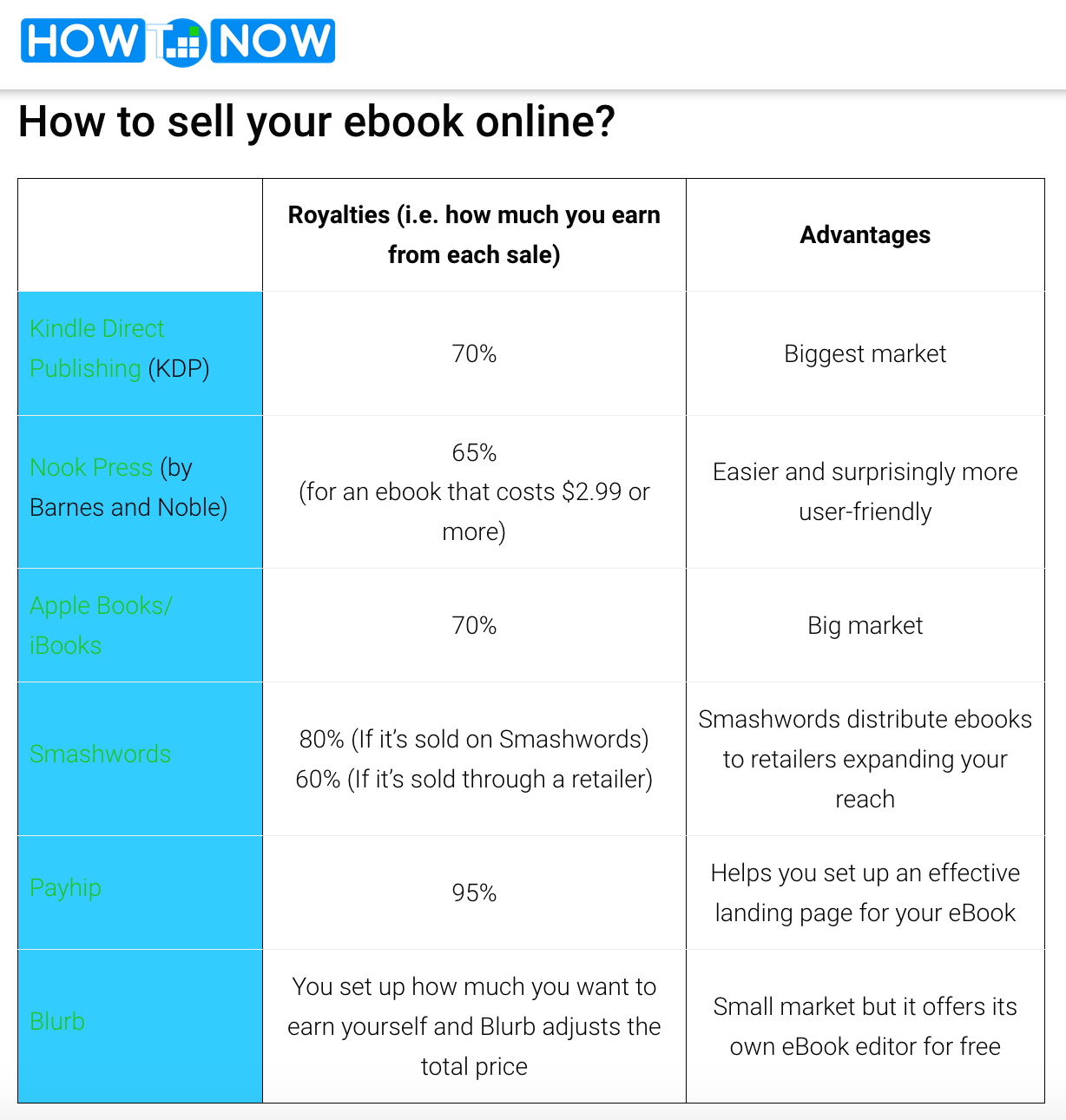
Note that the table is preceded by a keyword-based subhead, which may have helped Google discover it.
To give Google more reasons to generate enhanced search snippets, summarize multiple tools and tactics with tables.
4. Work on your title tags.
This is a no-brainer, which is why I’m not listing it first, even though it’s vital.
But some people don’t realize that the title tag (i.e. article headline) impacts the click-through rate from search results—not just rankings—as it’s the biggest clickable part of the search snippet.
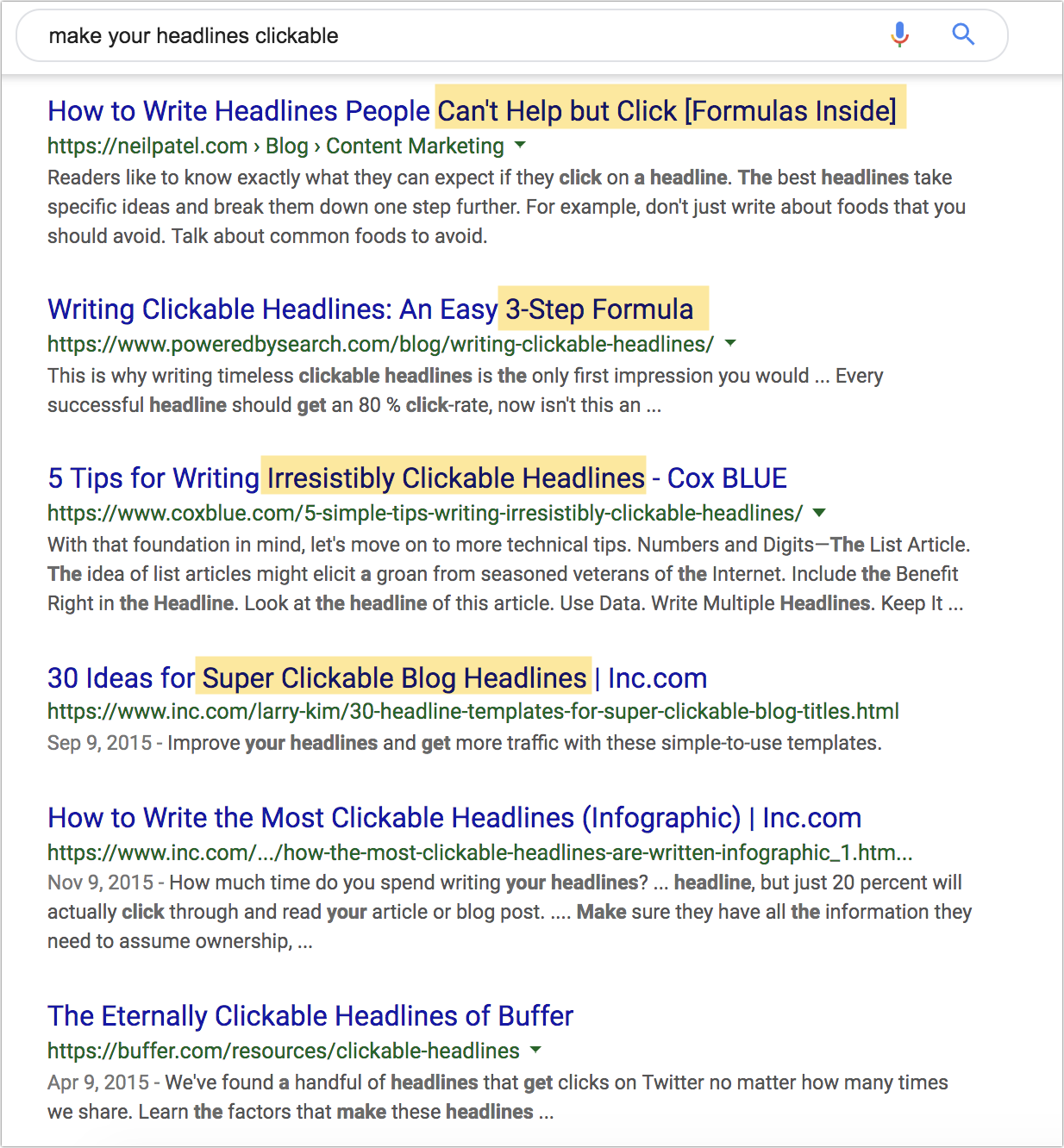
Using well-discussed headline tricks (e.g., numbers, adding colons or hyphens to separate parts of the headline, experimenting with negative words, etc.) will likely help your page stand out in search and improve its CTR.
5. Update your ranking content regularly.
Google loves fresh content. So do users, which is why Google shows dates in search results:
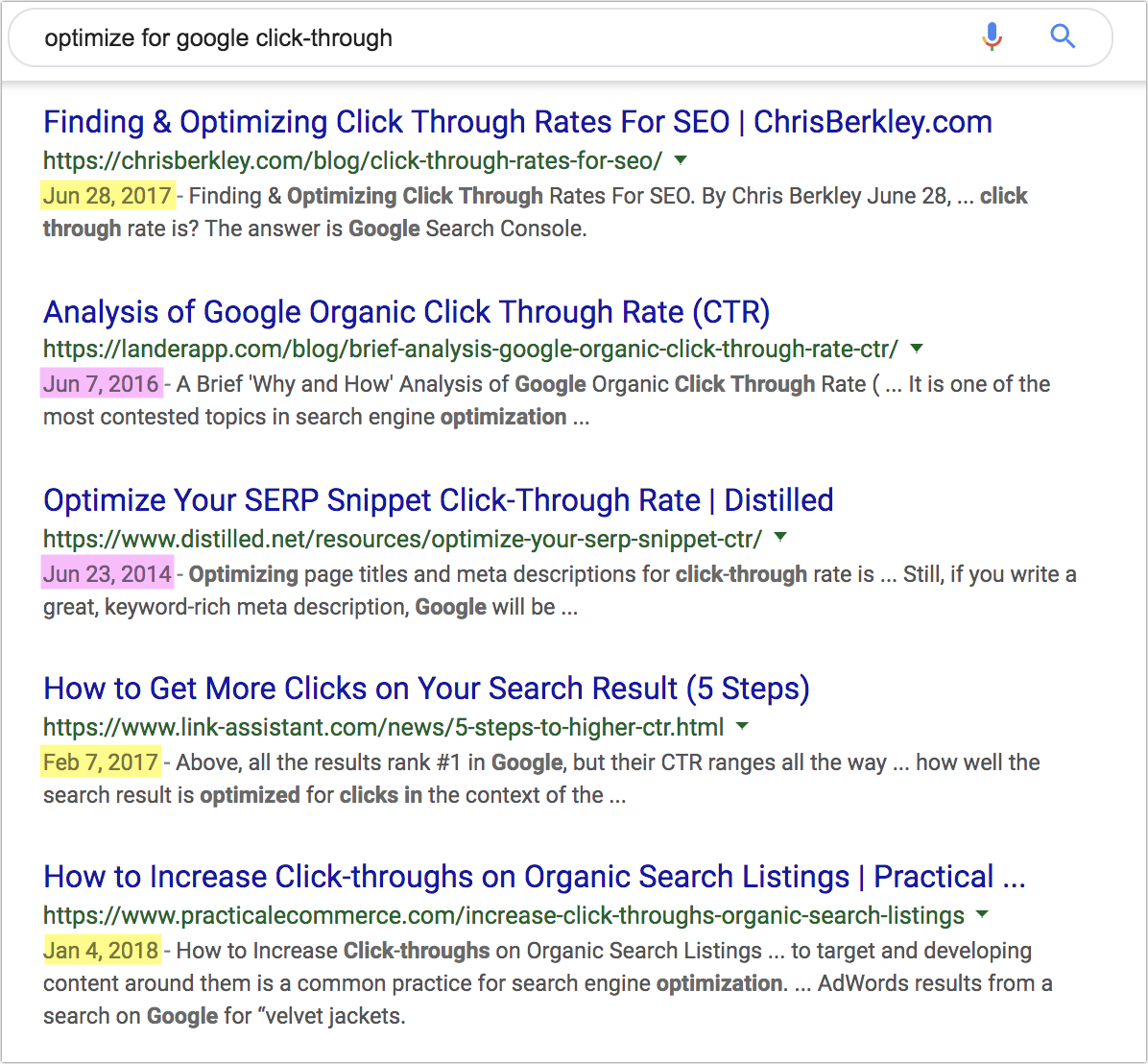
Keeping your content up-to-date helps organic rankings and CTRs. However, don’t just re-publish the same content with a new date. Google may frown upon that.
To justify an updated publish date, you need to provide substantial new value. How “substantial” is up for discussion, but Ross Hudgens suggests that at least 5% of your content should be updated:
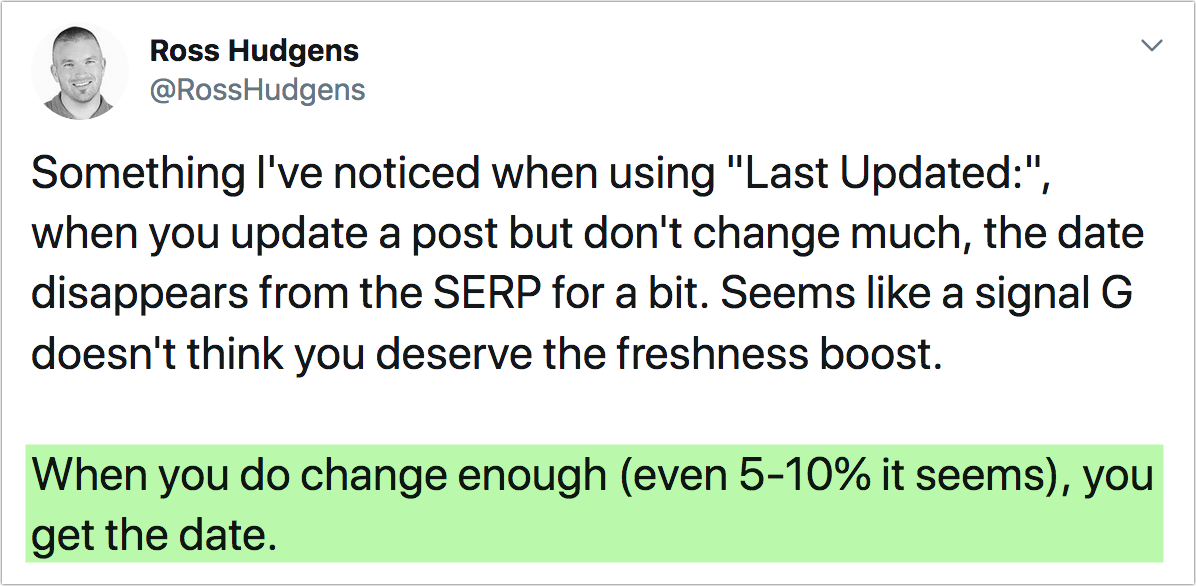
To make sure your content remains up-to-date, evaluate and update old content as part of your monthly marketing routine. Make it a task in your editorial calendar.
I use ContentCal to keep my team organized and alert them of upcoming projects:
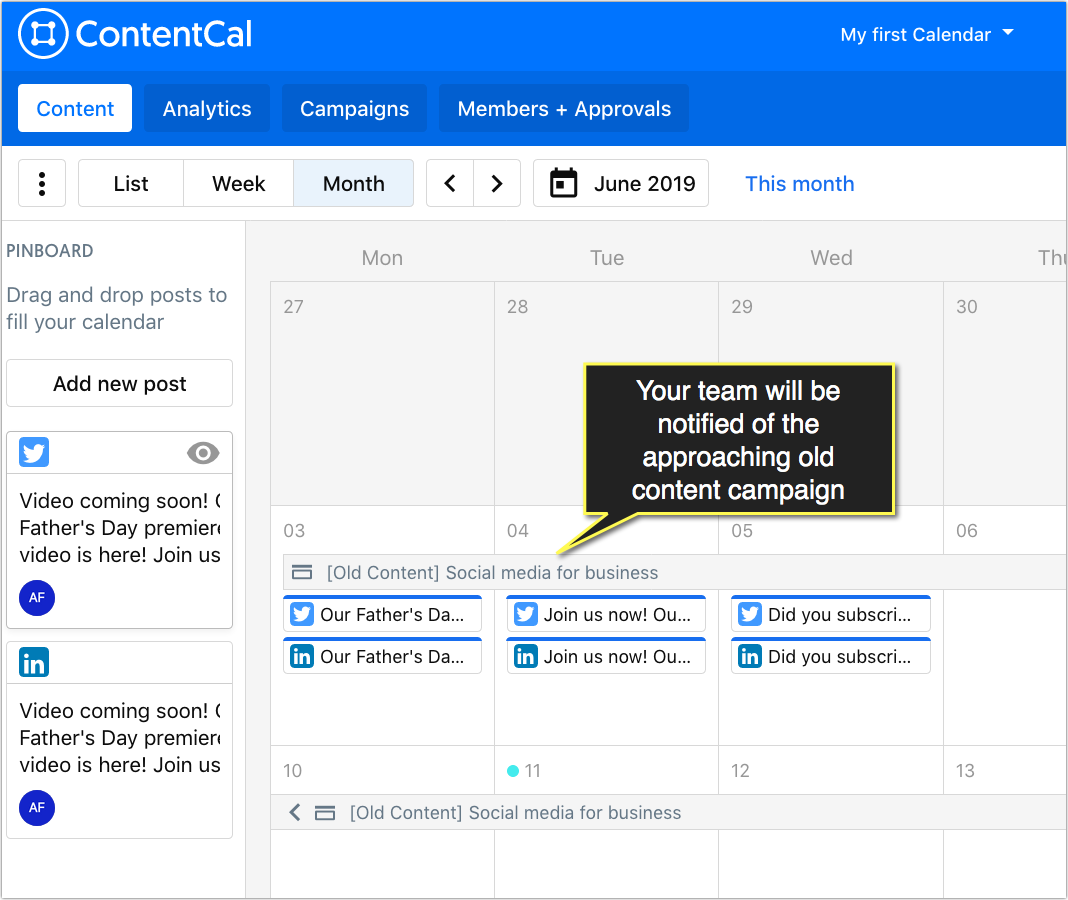
Apart from organizing a content maintenance routine, the tool also urges your team to market it again, sending fresh signals to Google.
Tools to help you keep your content up to date
Revive
Animalz came out with a free tool that connects to Google Analytics, analyzes your traffic for the past 12 months, and identifies pages that have been steadily losing traffic:
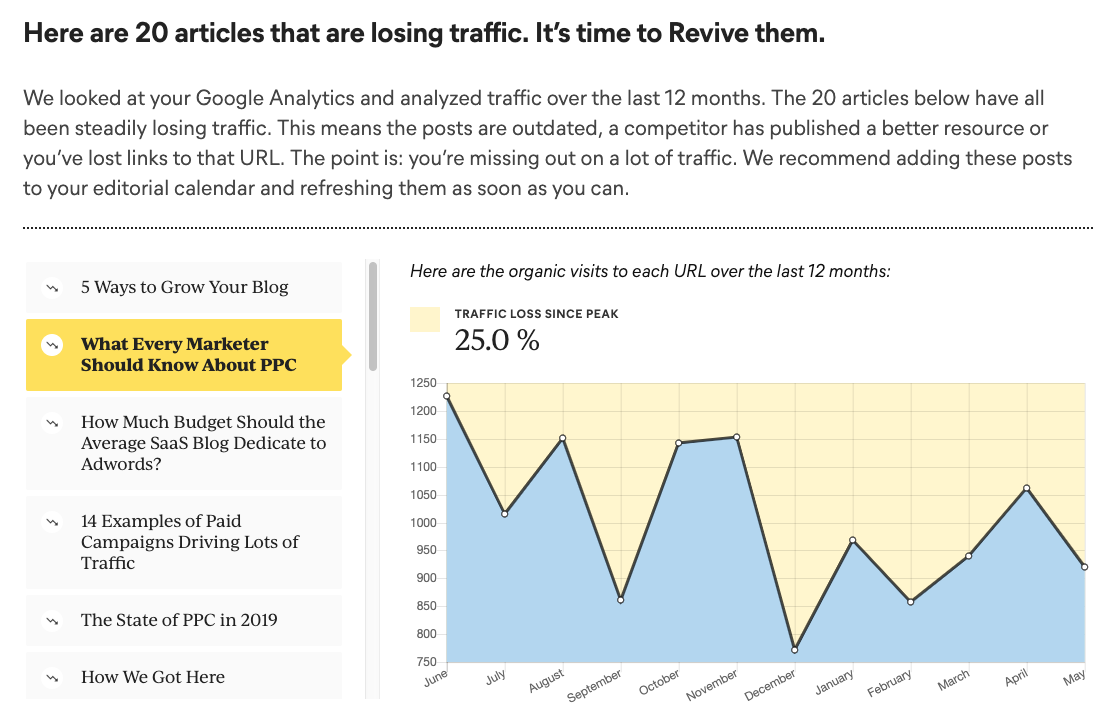
By updating these pages, you may “revive” their performance in search results. A new publish date may help clickability, but, as part of the updating process, consider all the other tips in this tutorial.
Finteza
While Animalz looks at all your content, Finteza limits the audit to the pages that drive the most traffic. You need to have it installed for some time before you can access historical insights.
Once you accumulate some data, log in to your account and follow these steps:
- Click “Websites” and open the report for the site you’re analyzing.
- In the left-hand panel, navigate to “Sources > Search” to access your organic traffic report. Until you disable it, this will filter all further reports.
- Click “Pages” to see the list of your best-performing pages. You can clearly see if any are losing clicks:
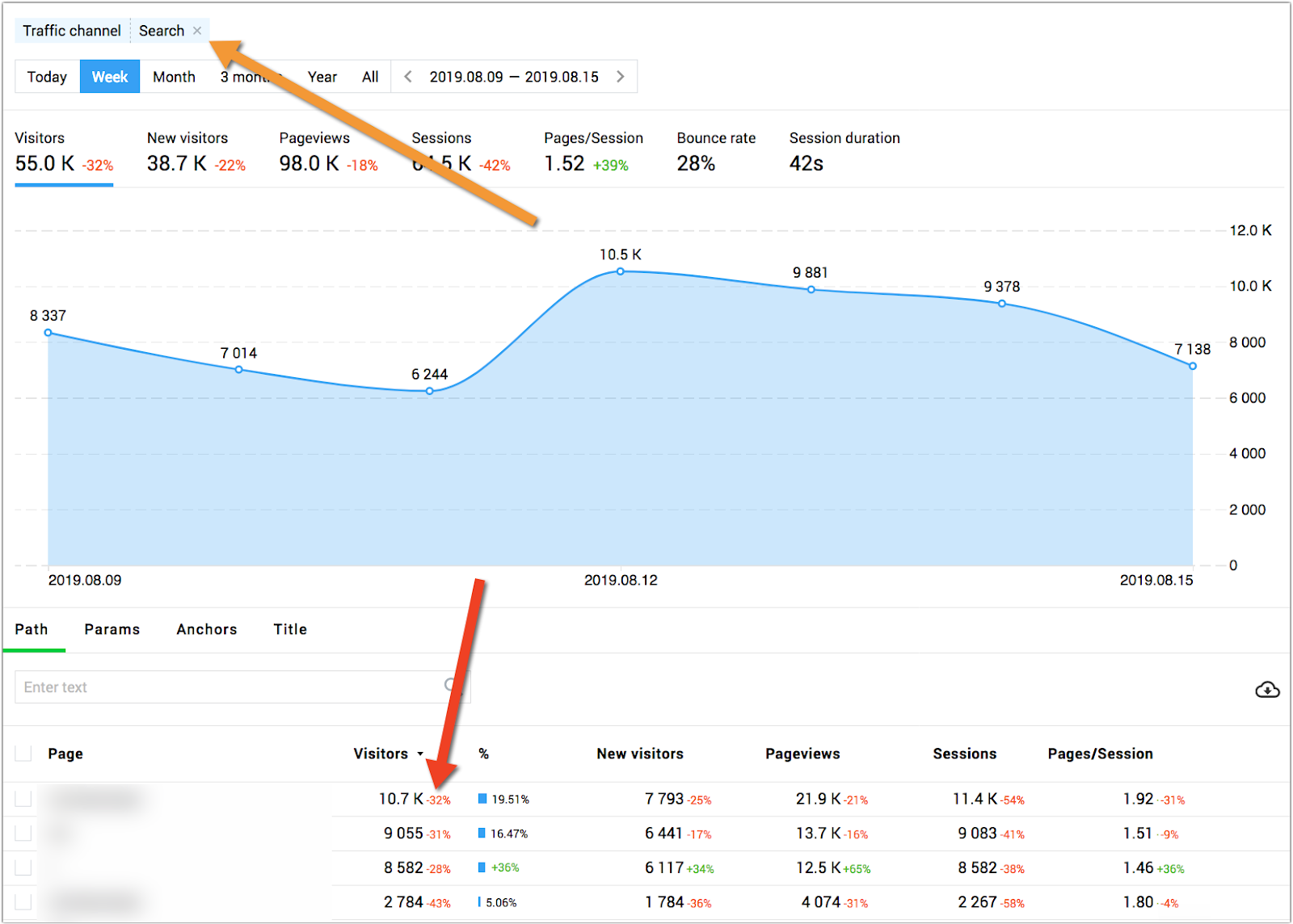
The report is ordered by the percentage of total traffic each page brings to the site, making it easy to monitor the most important assets.
Google Search Console
Finally, Google Search Console offers a helpful “CTR” report inside the “Performance > Search results” section, which you can use to monitor changes:
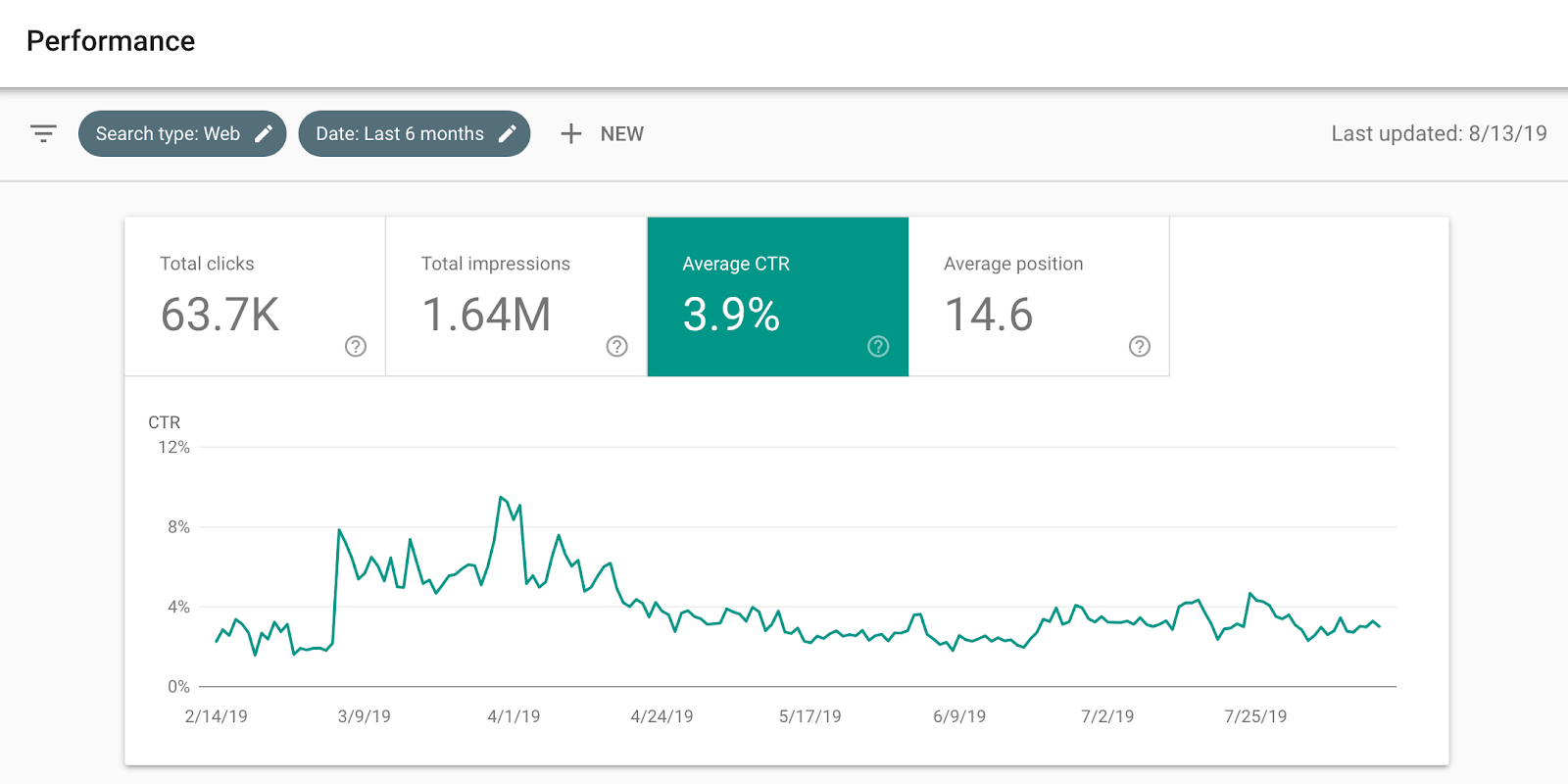
Click the “Pages” tab underneath the line chart. Then, filter pages for a minimum number of clicks to focus your attention on those that drive the most traffic:

Using a date range comparison, you can sort pages by changes to CTR, helping you identify those that would benefit from further optimization:
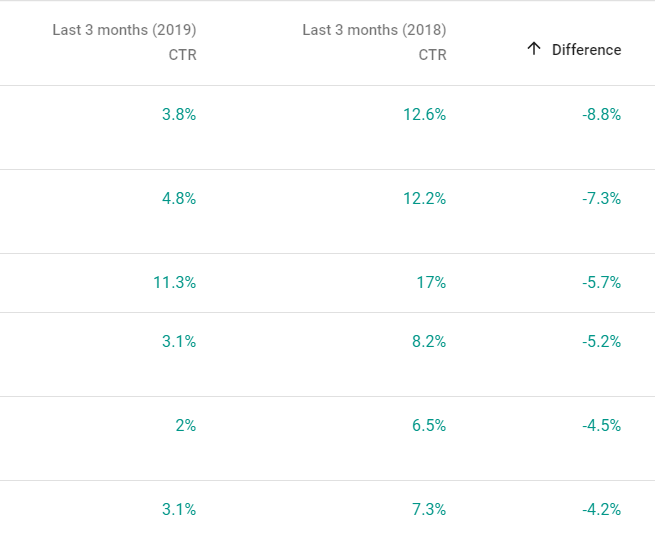
Once you identify a page that’s suffered a decline in CTR, you can add in “Average position” to see if a drop or rise in CTR was likely caused by a change in rankings—or something else.
In the example below, the CTR declined substantially even though the average position remained the same. That suggests that a change to a SERP element (like a featured snippet) may be costing you clicks.

From there, you can investigate the SERP to see if optimization of your content may help you recover those lost clicks.
Conclusion
Keeping your content well-structured, up-to-date, and in-depth will improve rankings, as well as click-through rate and on-page engagement. It’s a win-win.
Choose from the optimizations above to boost your overall content performance in an essential, albeit fickle, acquisition channel.
Digital & Social Articles on Business 2 Community
(111)


